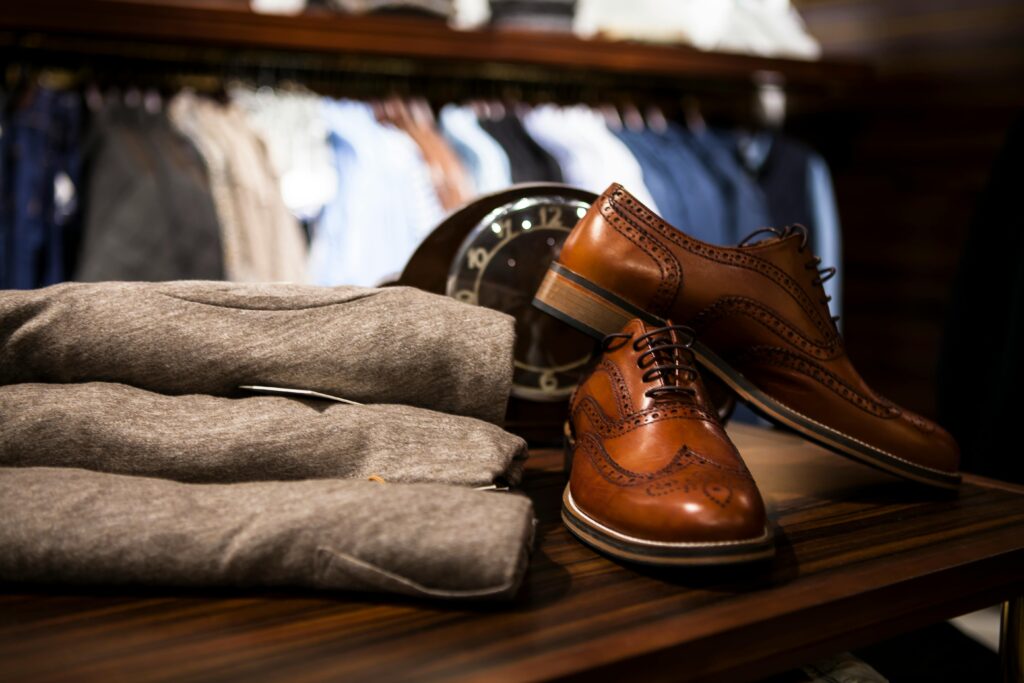Russian leather shoes are famous for their unique scent, deep colors and suppleness. The hides are treated with a special mixture of oils from nature in order to maintain the leather’s durability, strength and durability.
In contrast to European customers who opt for bright, bright shoes for the winter season, Russians value quality products that will withstand the local climate.
Craftsmanship
The simplest footwear was constructed of heavy, thick cowhide leather without decoration. The leather used for the shoes was soft, thinner and thicker. They were the footwear worn by artisans and peasants. The thick leather of soles was sewn to the upper and heel quarter using a combination of methods, including an inner seam and sewing using a needle (Illustration 4: Items 2v-4). The Lining [Rus. podnariad and podnarjad] was stitched to the heel quarter with a special stitch.
The archeological evidence also reveals that shoemakers in medieval Novgorod used a variety of methods to decorate their shoes, including stamping, embroidery, and leather carving. They also carved their names on the leather or in the sole of the footwear.
Openwork boots appeared around the 14th century. They were similar to soft shoes, in that they were one forward cut, and standing or lightly bent sides. Rawhide laces were used to tie the boots to the inside of the instep.
Schuh-Bertl came up with ways to make use of the leather, regardless of its rarity. It is then used in the creation of their Russia leather boot, which is now a legend in menswear because it’s extremely durable.
Durability
Alongside being stunning, Russian leather shoes are also extremely robust. This is because of their unique tanning process which results in stronger and more flexible leather. They’re also water resistant and insect repellent. They are perfect for outdoor sports and long walks. They are so durable that professional hikers and hunters wear them.
In the wreckage from the Metta Catharina, one of the most famous Russian leathers was found. Divers discovered bundles of Russian reindeer hides. They instantly became an historical legend. The hides were a rich claret color and had a distinct aroma. Cleverly custom shoemakers contacted the divers after having cleaned them. The bespoke shoemakers agreed that they were able to do justice to the famed leather.
The leather was then tanned with oak bark, then greased using birch oil to create the durable and waterproof properties that made it so renowned. Its reputation grew throughout the world up to the Russian Revolution, when the method of tanning and the recipe were lost.
Hermes recreated the appearance and feel of the leather by with a method known as “Russian Calf”. First, the best calfskins are carefully selected (only those less than a year old and not older than six months for the typical calveskin). Then, they’re soaked in a pit for tanning made out of willow, oak and birch bark. All native trees of the region where the leather was crafted. They are then dyed and printed with the distinctive cross-hatch pattern found in Russian leather.

Quality control
A lot of shoemakers still use their old methods but have started to adopt the latest technology. For instance, the Yachting factory, for instance has substituted foreign manufacturing blanks and makes shoes from start to finish in Russia. This allows for more flexibility in adjusting to the requirements of clients and also reduces the time to produce. This also improves the quality of footwear by eliminating defects and improving the process of production.
The quality of footwear depends on the materials used and giay the thao nam manufacturing processes. Shoes manufacturers must use the best materials and have clean, well-equipped facilities. To ensure the high-quality of their goods, businesses should also adhere to a strict inspection schedule. An experienced inspector is aware of the tests to run and will assist you in achieving the highest levels of quality.
Shoes must meet specific standards before it can be sold in Russia which includes testing for harmful substances. Hohenstein will test your leather footwear for harmful chemicals in accordance to the LEATHERSTANDARD RSL and then issue a certificate.
The high-end quality of Russian shoes is an important factor in the country’s economy. A good reputation for high-quality shoes can draw customers in and help boost the economy of the country. The Russian shoe industry is optimistic despite the obstacles. For example the Egorievsk Shoemaker Company continues to invest in its hometown, and sponsors restorations of cultural monuments. It also supports kids’ sports and assists the veterans of war and labor.
Manufacturing processes
The standards are extremely stringent. The products must be in compliance with GOST and the Roskachestvo advanced standard. These standards have higher demands on tailoring and toxicity. These products are also subject to a compulsory test to ensure compliance with environmental standards and must be made from local materials.
The shoemaker must also follow an array of guidelines and specifications to guide the design and manufacturing process. The soles, for instance should be water-proof and long-lasting. The uppers must also be flexible enough to allow movement in all directions and conform to the natural form of your foot. The manufacturing process of footwear is based on a complete cycle, from cutting the skin to the packaging of the finished product.
The footwear should be soft and comfortable. In addition, they must be resistant to abrasion and corrosion. This is the reason that many Russian manufacturers produce footwear with textile uppers. In 2022 the production of shoes exceeded 34 million pairs.
According to the Ukrainian sanctions monitoring project Trap Aggressor, Russian military shoemakers import raw materials and equipment from Europe. Imported products directly worth 4.1 million dollars from European companies include leather, glue and other parts used in shoes-making equipment. Inna Khramtsova, the leading designer for the company Unichel, has been creating shoes for more than 20 years. She knows what shoes Russian women are purchasing today and which shoes will be in fashion tomorrow.